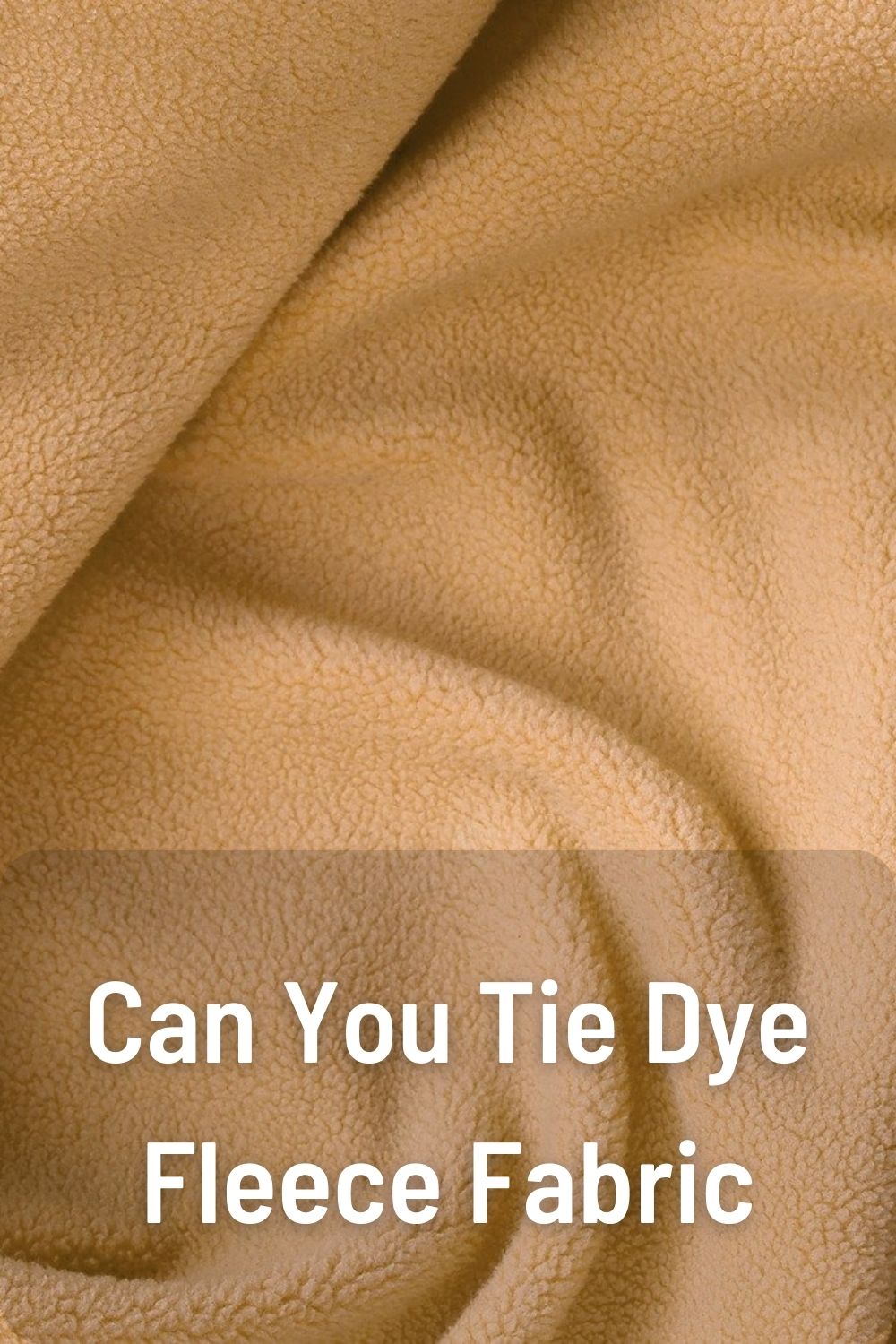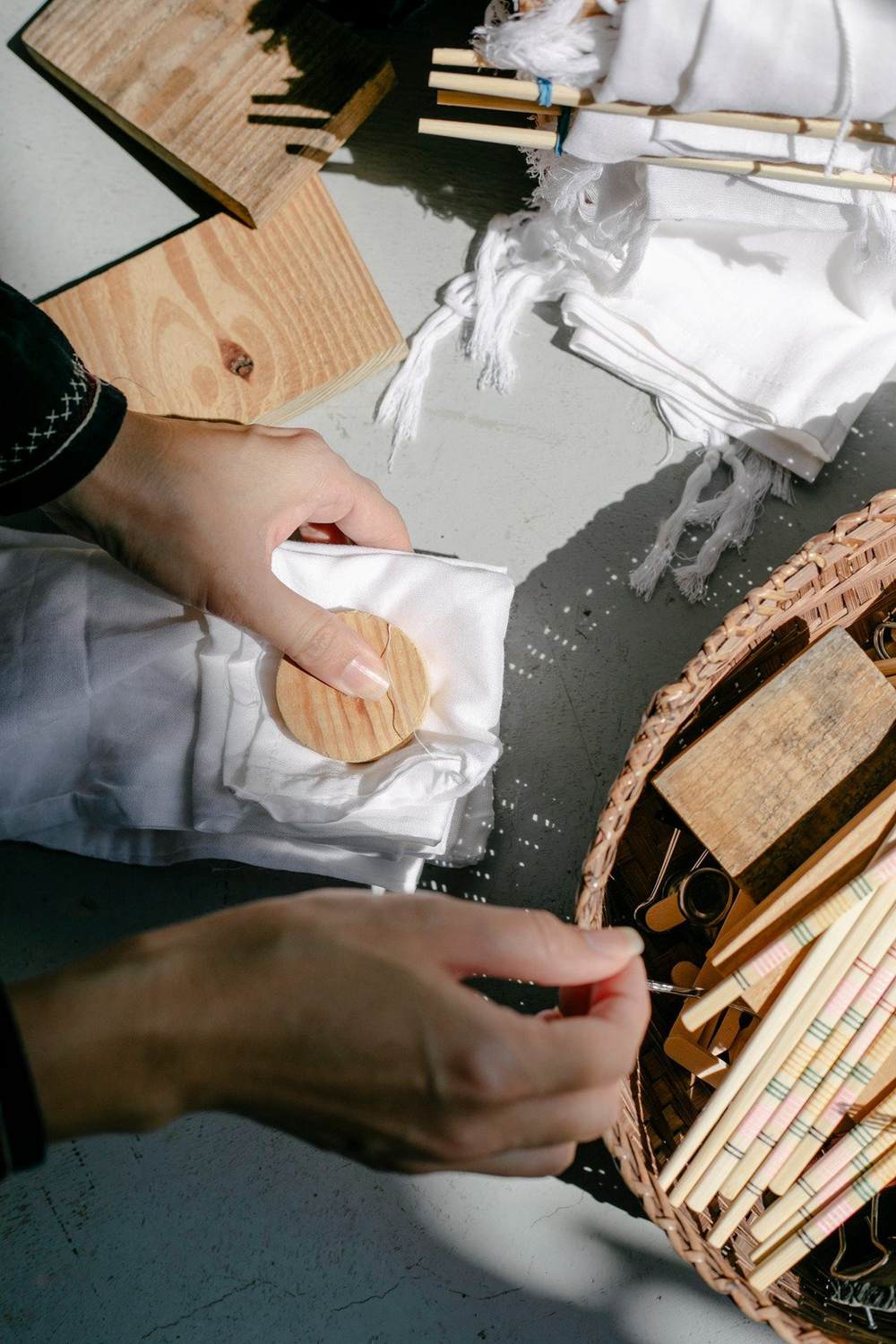
Tie dyeing fleece fabric is absolutely possible and can create some beautiful, vibrant patterns on your fleece clothing and accessories. With the right dyes, techniques, and preparation, you can easily tie dye fleece at home.
In this complete guide, we will cover everything you need to know about tie dyeing fleece fabric, including:
Table of Contents
What You Need to Tie Dye Fleece

To get started, you will need just a few basic supplies:
Fleece Fabric
The fleece fabric you use needs to be made of 100% polyester. Natural fibers like cotton and wool don’t tend to hold the tie dye well. Look for solid color fleece rather than printed. White or light fleece works best to show the colors vividly.
Tie Dye Kits or Dyes
You can purchase complete tie dye kits with the dyes and other supplies you need. Make sure to get dyes specifically intended for synthetic fabrics. Fiber reactive dyes work well. Other options are disperse dyes or acid dyes.
Rubber Bands
Rubber bands are perfect for tying off sections of the fleece to create the traditional tie dye patterns. Get small rubber bands that will fit well around the bunched up fabric.
Plastic Gloves
Protect your hands while dyeing with a pair of disposable plastic gloves. You may also want an apron or older clothes you don’t mind getting stained.
Squeeze Bottles
To apply the dye neatly and precisely on the fleece, use squeeze bottles rather than the bottles the dyes come in. Small plastic squirt bottles work well.
Plastic Bags
Seal up your tie dyed fleece in plastic bags while the dye sets to keep it moist and avoid leaks. Resealable bags are ideal.
With these basic supplies, you are ready to start tie dyeing fleece!
How to Tie Dye Fleece Step-By-Step
Follow these steps for beautiful, vibrant tie dye results on your fleece:
1. Pre-wash the Fleece
Wash your fleece fabric on its own first, using hot water. This pre-shrinks it and removes any coatings that could interfere with the dye. Avoid using fabric softener.
2. Hang the Fleece to Dry
After washing, hang or lay the fleece flat to dry completely before starting the dye process. Damp fabric won’t absorb the dye as well.
3. Prepare the Dye
Mix up your dyes according to the package directions. Use Utensils and containers designated just for dyeing. Wear gloves to protect your hands. Fill squeeze bottles with the dye mixtures.
4. Fold and Tie the Fleece
Lay out your fleece and start folding and tying it in sections to create your desired pattern. The more you scrunch and tightly tie the fleece, the less dye will penetrate and the lighter that area will be.
5. Apply the Dye
Squirt dye onto the fleece sections, applying more dye for darker colors and less for lighter colors. Cover all the fabric with dye. Flip it over and reapply dye to any white areas on the back.
6. Seal in a Bag
Place the dyed fleece in a plastic bag, getting out as much air as possible. This keeps the fleece moist so the dye can fully saturate the fibers.
7. Let It Sit
Allow the fleece to sit sealed in the bag for at least 6-8 hours or up to 24 hours. During this time, check periodically to move the fleece around in the dye.
8. Rinse and Reveal
When the time is up, put on gloves and rinse the fleece with cold water until the water runs clear. Remove the ties and rubber bands to reveal your colorful pattern!
9. Wash and Dry
Wash the fleece by itself in hot water with a dye catching sheet then tumble dry on low. The colors may bleed a little more the first wash but will set permanently after that.
And that’s it! With these steps, you can create dazzling tie dye fleece to make one-of-a-kind clothing, blankets, accessories, and more. Have fun unleashing your creativity!
Tie Dye Pattern Ideas for Fleece
Here are some fun,beginner-friendly tie dye patterns to try on fleece:
- Spirals – Twist the fleece into a spiral and tightly tie rubber bands around it before dyeing. The tighter the twist, the more white will show.
- Stripes – Fold the fleece into accordion pleats and tightly bind with rubber bands to create stripes. Use different dye colors for each stripe section.
- Bullseye – Pinch the fleece into a circle and tie it off in the center with a rubber band. Apply dye in rings of different colors radiating from the center.
- Crumple – For an organic, sea-like pattern, crumple the fleece tightly and secure with rubber bands before dyeing. The crumpled parts will resist the dye.
- Sunburst – Gather the fleece at the center and tie it with one large rubber band in a starburst shape before dyeing with bold rays of color.
Feel free to combine shapes and patterns too. Layering shapes like spirals and stripes can create really cool effects. Play around and see what you can come up with!
Tips for the Best Results Tie Dyeing Fleece
To get vibrant, even colors and well-defined patterns when tie dyeing fleece, keep these tips in mind:
- Make sure your fleece is 100% polyester, pre-washed, and completely dry before starting.
- Tie the fleece very tightly with many rubber bands to get defined white areas in the pattern.
- Use thickened dye mixtures for the brightest colors. Follow manufacturer mixing directions.
- Apply dye generously for full saturation. Flip and re-dye any uneven white spots for full coverage.
- Seal the dyed fleece in a plastic bag, removing excess air, so the dye stays evenly distributed.
- Soak the fleece for at least 6-8 hours, up to a full day, checking periodically.
- Rinse thoroughly in cold water until water runs clear. Wash separately afterward.
- Set the color by washing in hot water before wearing and drying on low heat.
Taking a bit of time with the preparation and application will give you eye-catching tie dye results you’ll love showing off!
Does Tie Dyeing Fleece Work on Cotton?

While fleece made from 100% polyester works beautifully for tie dyeing, natural fibers like cotton do not hold the dye as well. Cotton tie dye involves different types of dyes and techniques.
The cellulose fiber structure of cotton does not readily absorb synthetic, fiber reactive dyes. So cotton needs to be dyed with direct dyes or natural dyes specially made for plant-based textiles.
Cotton also requires additional dye setting steps like soaking in a dye fixative solution and heat setting with an iron. Even then, the colors tend to fade faster compared to synthetics.
If you want to tie dye a cotton fleece or blend, use specialized cotton dyes and be prepared for more muted, imperfect results. The dye may bleed and mix together more. Stick with polyester fleece for those bold, vivid tie dye looks.
Common Questions about Tie Dyeing Fleece
Here are answers to some frequently asked questions about tie dyeing fleece fabric:
Can you tie dye fleece that already has a design?
Yes, you can tie dye printed fleece but the results may be less vibrant. The dye won’t adhere as well to the inked fabric parts. For the brightest colors, opt for solid white or light fleece instead.
What is the ideal fleece weight for tie dye?
Medium weight fleece around 250 gsm works well. Heavy or fuzzy fleece may not absorb dye evenly. Sheer, lightweight fleece could come out too transparent in places. Stay in the mid-range for best results.
How do you soften fleece after tie dyeing?
To soften stiff fleece after dyeing, wash it with a few towels to prevent pilling. Use fabric softener in the rinse cycle. Tumble dry low with dryer balls. Finally, steam the fleece while stretching and smoothing it out.
Can you put tie dyed fleece in the dryer?
Yes, tumble drying on low heat is recommended after rinsing and washing to fully set the dye. High heat could damage the fleece or cause excess dye bleed. Air dry if you want to be extra cautious.
How do you wash a finished tie dyed fleece item?
Hand wash or machine wash tie dyed fleece garments in cold water with mild detergent, no bleach. Wash similar colors together to prevent staining. Line dry or tumble dry on low. The colors will remain vibrant wash after wash.
Conclusion
Tie dyeing fleece allows you to create fun, vibrant custom fabrics perfect for blankets, apparel, accessories, and more. With the right supplies and techniques, you can dye polyester fleece in beautiful patterns and colors that really pop.
It’s easy to achieve eye-catching results at home with just a bit of patience during the soaking and rinsing steps. Use bold colors and defined shapes with tightly tied rubber bands. With our complete tie dye fleece guide, you’ll be ready to try out this rewarding craft and show off your tie dyed fleeces.
FAQ
Is all fleece good for tie dye?
No, for best results you want 100% polyester fleece rather than natural fibers like cotton. Polyester absorbs and holds the synthetic dyes much better than plant-based fibers. Check the fabric composition before purchasing fleece to tie dye.
What are the different ways to tie fleece for dyeing?
Popular ways to tie fleece for defined dye patterns include accordion folds, bullseyes, spirals, sunbursts, crinkling, and stripes. You can tie the fleece into different shapes using rubber bands before dyeing for unique designs.
Can you use clothing dye on fleece?
Yes, as long as you use dye formulated for synthetic fabrics. Fiber reactive dyes work well on polyester fleece. Avoid natural fiber dyes for cotton and silk, as they won’t bind properly with fleece.
How long do you need to let fleece soak in the dye?
Plan on soaking the dyed fleece for 6-8 hours minimum, up to 24 hours for very saturated colors. Periodically check and massage the fleece while soaking to evenly distribute the dye. Longer soaking gives the best results.
Does tie dye work well on fleece blankets?
Tie dyeing fleece blankets can create gorgeous, colorful patterns perfect for bedrooms or outdoor use. Be sure to use medium weight 100% polyester fleece. Tie it tightly but allow room for the blanket thickness before dyeing. Rinse thoroughly in cold water.